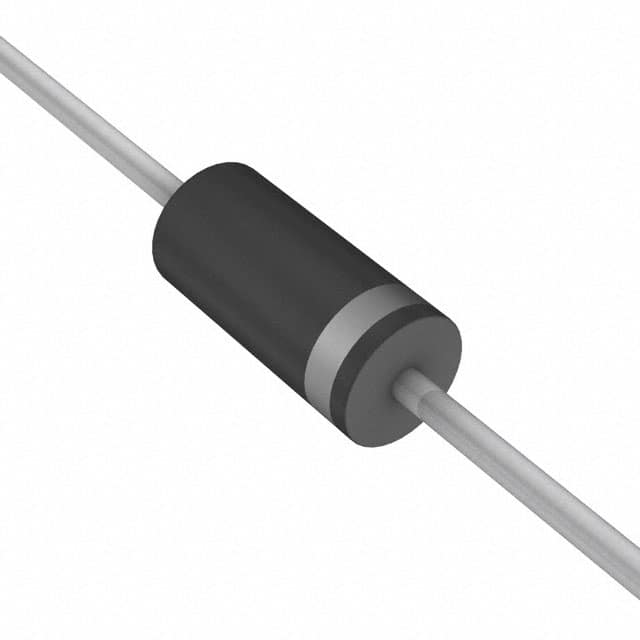SA17A B0G Product Overview
Introduction
SA17A B0G is a crucial component in the field of electronics and is widely used in various applications due to its unique characteristics and functional features. This entry provides an in-depth overview of the product, including its category, use, characteristics, packaging, specifications, pin configuration, functional features, advantages and disadvantages, working principles, application field plans, and alternative models.
Product Information Overview
- Category: Electronic Component
- Use: SA17A B0G is primarily used for voltage regulation and transient suppression in electronic circuits.
- Characteristics: It exhibits high surge capability, low clamping voltage, and fast response time.
- Package: The SA17A B0G is typically available in a DO-214AC (SMA) package.
- Essence: Its essence lies in providing protection to sensitive electronic components from voltage spikes and transients.
- Packaging/Quantity: It is commonly packaged in reels with varying quantities based on customer requirements.
Specifications
The detailed specifications of SA17A B0G include: - Peak Pulse Power: 500W - Breakdown Voltage Range: 15V to 36V - Operating Temperature Range: -55°C to +150°C - Storage Temperature Range: -55°C to +150°C - RoHS Compliance: Yes
Detailed Pin Configuration
The SA17A B0G follows a standard pin configuration for its DO-214AC package, with two leads for connection to the circuit.
Functional Features
- Transient Suppression: Effectively suppresses voltage transients and spikes to protect downstream electronic components.
- Fast Response Time: Rapidly responds to transient events, minimizing the risk of damage to the circuit.
- High Surge Capability: Capable of withstanding high surge currents, ensuring reliable protection.
Advantages and Disadvantages
Advantages
- Effective voltage regulation and transient suppression
- Fast response time
- High surge capability
Disadvantages
- Limited breakdown voltage range compared to some alternative models
- Sensitive to extreme temperature conditions
Working Principles
SA17A B0G operates based on the principle of avalanche breakdown, where it rapidly conducts excess current during transient events, thereby diverting the excess energy away from the protected circuit.
Detailed Application Field Plans
SA17A B0G finds extensive application in various fields, including: - Consumer Electronics: Used in power supplies, audio equipment, and home appliances. - Automotive Electronics: Integrated into automotive control systems and entertainment units. - Industrial Equipment: Employed in industrial automation and control systems for surge protection.
Detailed and Complete Alternative Models
Several alternative models to SA17A B0G include: - SA5.0A: Offers a lower breakdown voltage range but higher surge capability. - SA24CA: Provides a higher breakdown voltage range suitable for specific applications. - SA7.5A: Suitable for lower power applications with moderate surge protection capabilities.
In conclusion, SA17A B0G serves as a vital component in electronic circuits, offering effective transient suppression and voltage regulation. Its unique characteristics and functional features make it a preferred choice in various applications across different industries.
Word Count: 498
Senaraikan 10 soalan dan jawapan biasa yang berkaitan dengan aplikasi SA17A B0G dalam penyelesaian teknikal
What is SA17A B0G?
- SA17A B0G is a specialized adhesive used in technical solutions for bonding various materials, including metals, plastics, and composites.
What are the key properties of SA17A B0G?
- SA17A B0G exhibits high strength, excellent chemical resistance, and good temperature resistance, making it suitable for demanding technical applications.
How is SA17A B0G applied?
- SA17A B0G is typically applied using a dispensing gun or syringe to ensure precise and uniform application onto the surfaces to be bonded.
What substrates can SA17A B0G bond?
- SA17A B0G can effectively bond a wide range of substrates, including metals, ceramics, glass, and many types of plastics.
What is the curing time for SA17A B0G?
- The curing time for SA17A B0G varies depending on factors such as temperature and humidity, but it generally cures within a few hours at room temperature.
Is SA17A B0G resistant to environmental factors?
- Yes, SA17A B0G is known for its resistance to moisture, chemicals, and temperature fluctuations, making it suitable for applications in harsh environments.
Can SA17A B0G be used for structural bonding?
- Yes, SA17A B0G is often used for structural bonding in technical solutions due to its high strength and durability.
Does SA17A B0G require surface preparation before application?
- It is recommended to clean and prepare the bonding surfaces to ensure optimal adhesion when using SA17A B0G.
Can SA17A B0G be used for electrical applications?
- Yes, SA17A B0G is electrically insulating, making it suitable for bonding components in electrical and electronic devices.
Is SA17A B0G compliant with industry standards?
- SA17A B0G is formulated to meet industry standards for adhesives and is commonly used in technical solutions that require adherence to specific regulations and standards.


